Looking in Spaceship Windshields
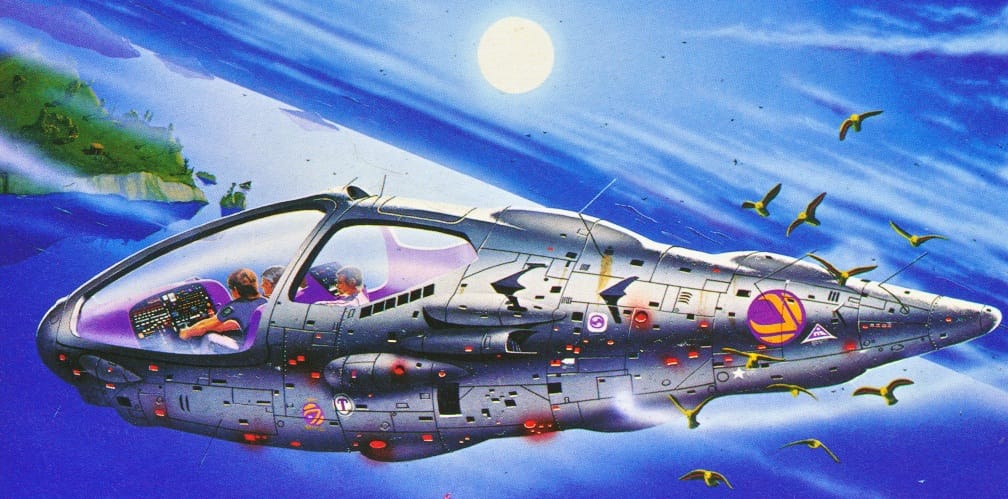
Spaceship windshields don't make much sense for several different reasons – the lack of wind and the physical limitations of translucent materials being the big ones.
However, they look cool. Which means they make a lot of sense on sci-fi book covers. And for some reason, during the 70s and 80s, UK publishers apparently loved them.
Tim White is the top fan of exterior views of spaceship cockpits by far. You already saw the header image for this post, but here's two more – and these are just the ones with islands in the background.
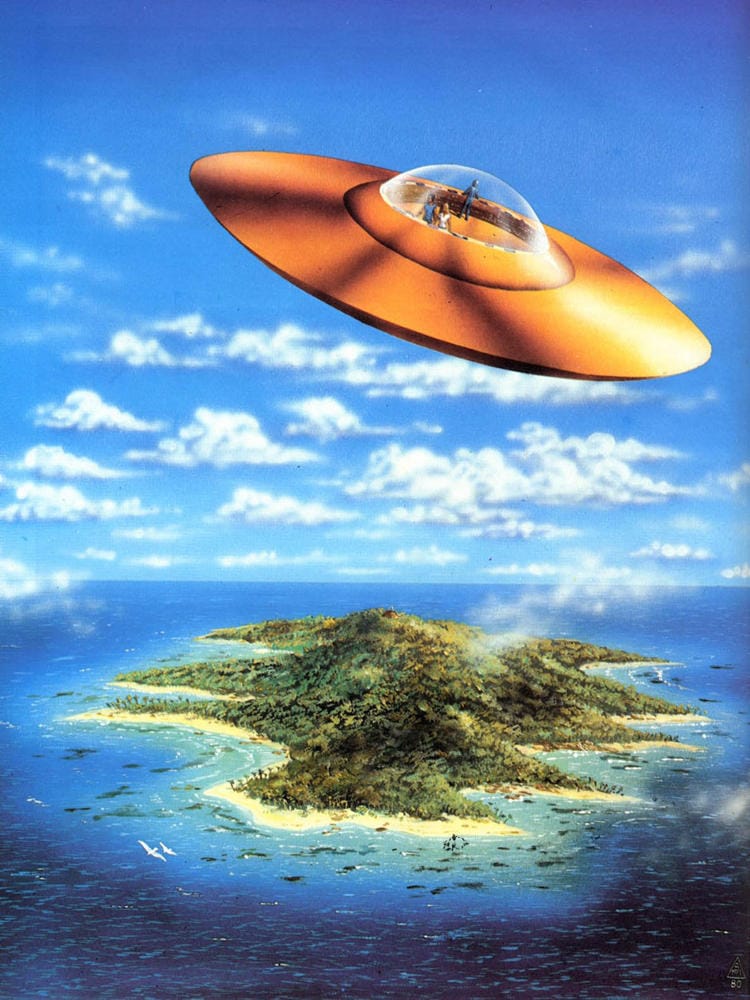
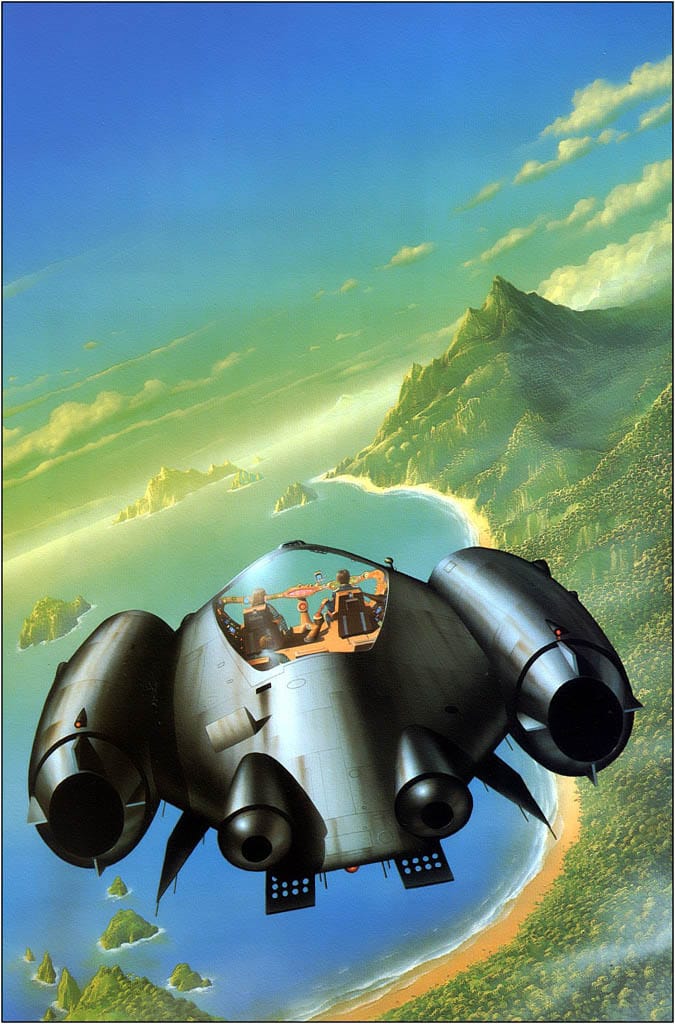
Here they're cruising by a pyramid on White's 1979 cover to The Tar-Aiym Krang, by Alan Dean Foster.
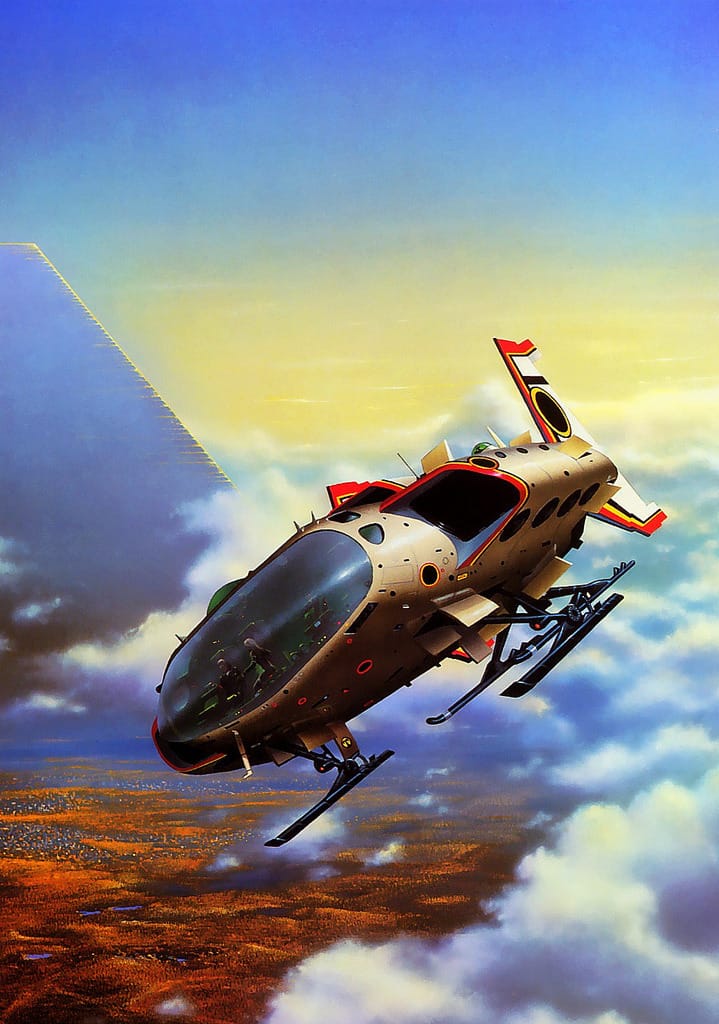
The humans are often identifiable (and with enough detail to confirm if they have 70s-style facial hair), but sometimes White puts them in a spacesuit.
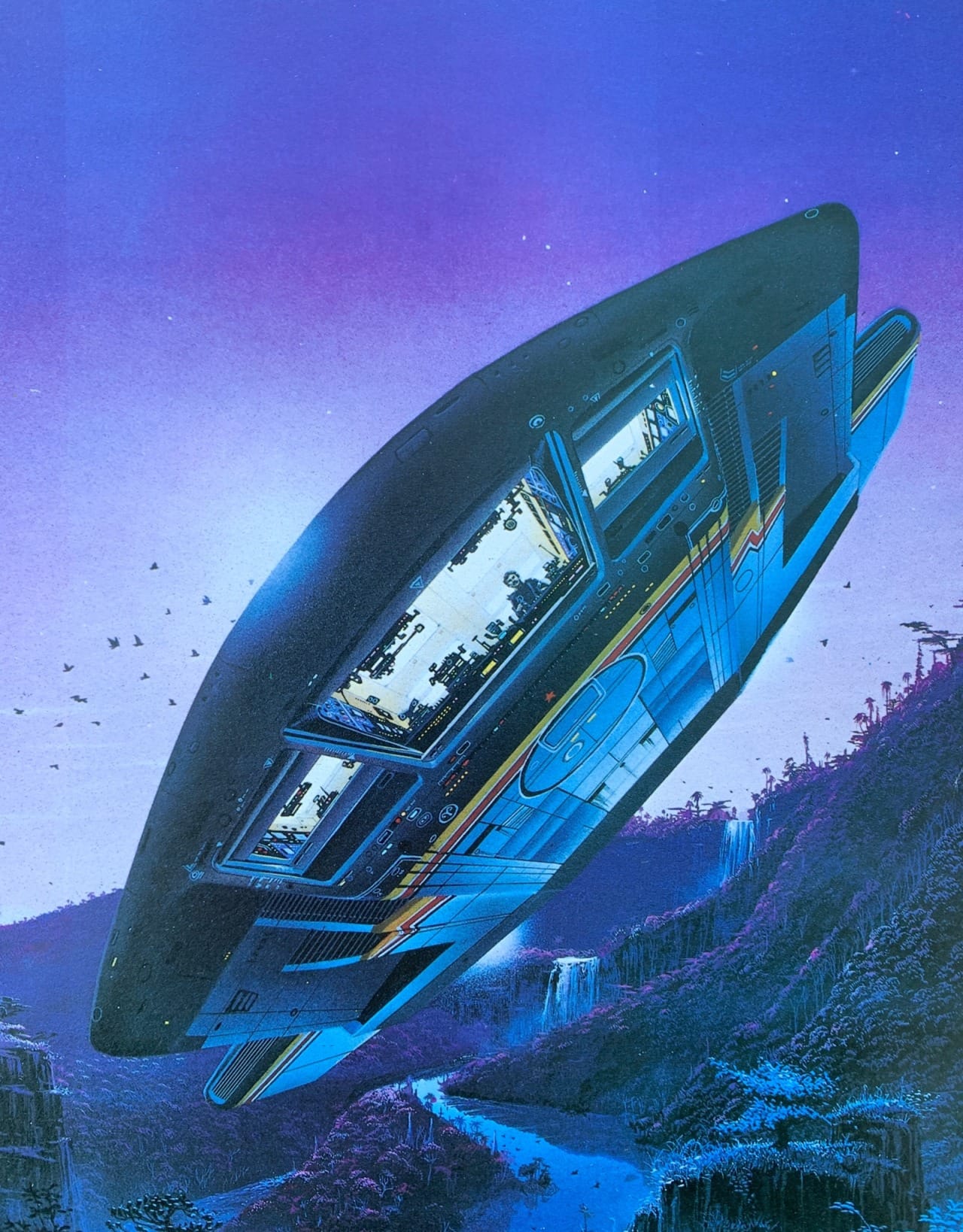
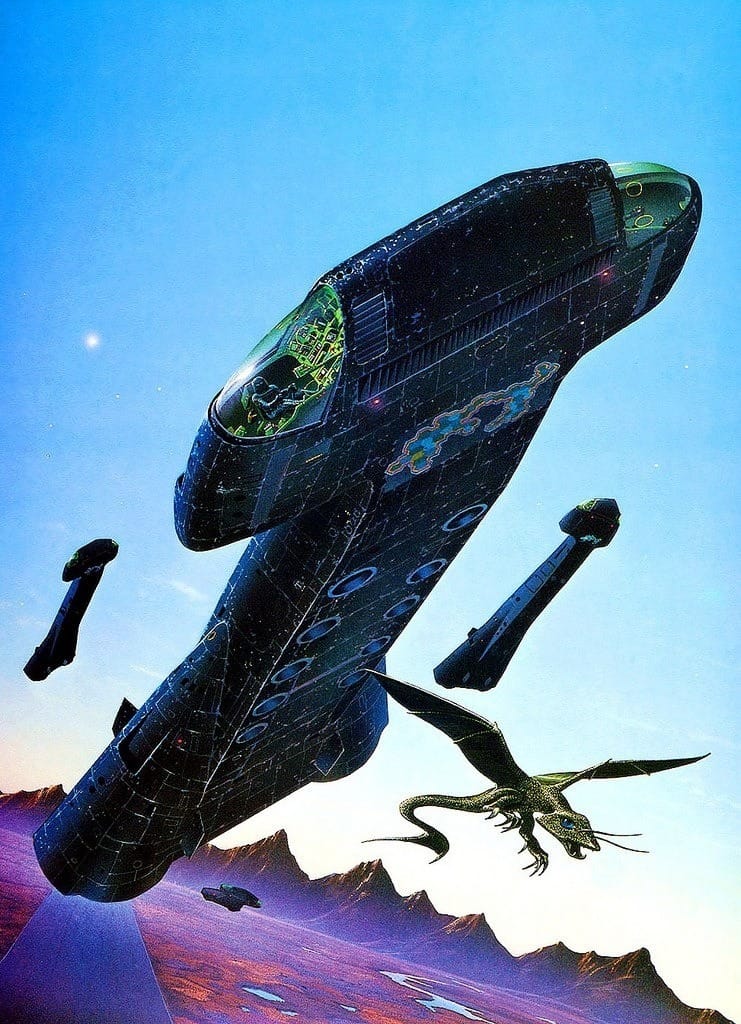
(Thanks to Retro Sci-Fi Art for the lefthand scan, the 1976 cover to Not Before Time by John Brunner!)
The spaceship doesn't even have to depict humans. For Tim White’s 1983 cover to The Ceres Solution, by Bob Shaw, it's empty...
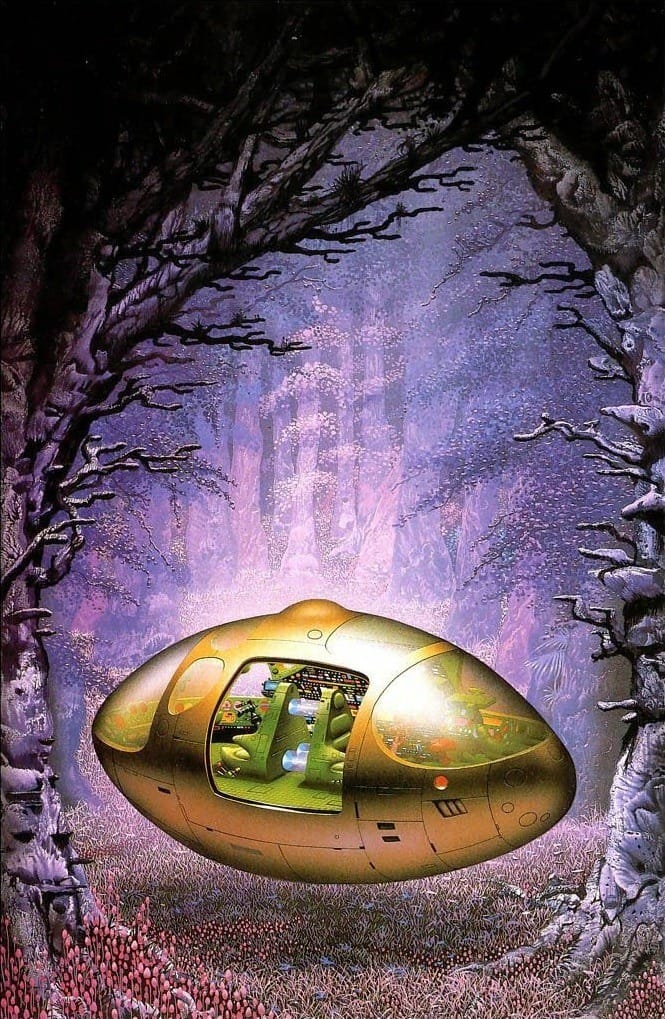
...and for this one, they're aliens.
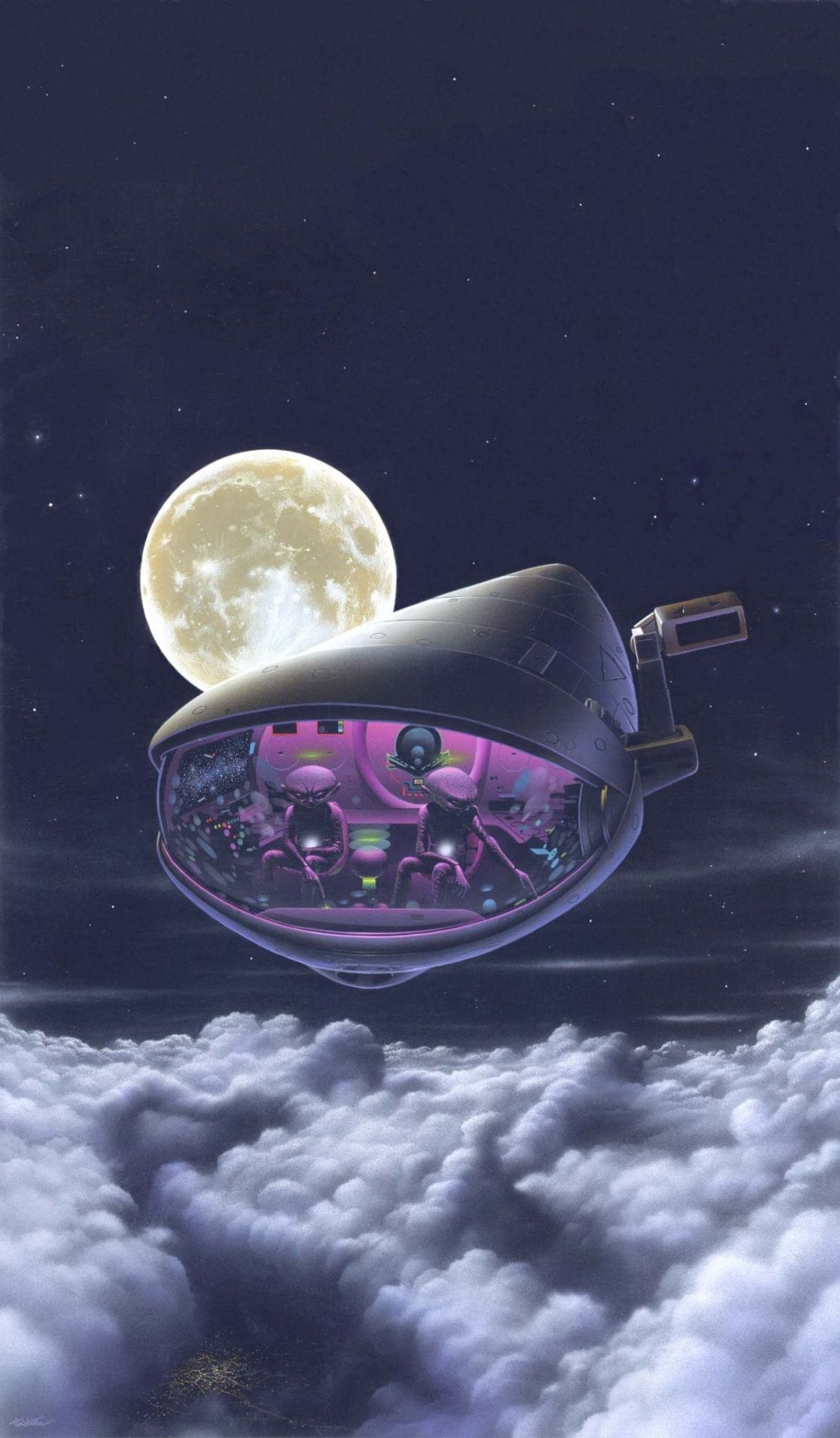
The viewing port on this 1977 Tim White spaceship makes sense given the title of the book it's illustrating: Those Who Watch, by Robert Silverberg.
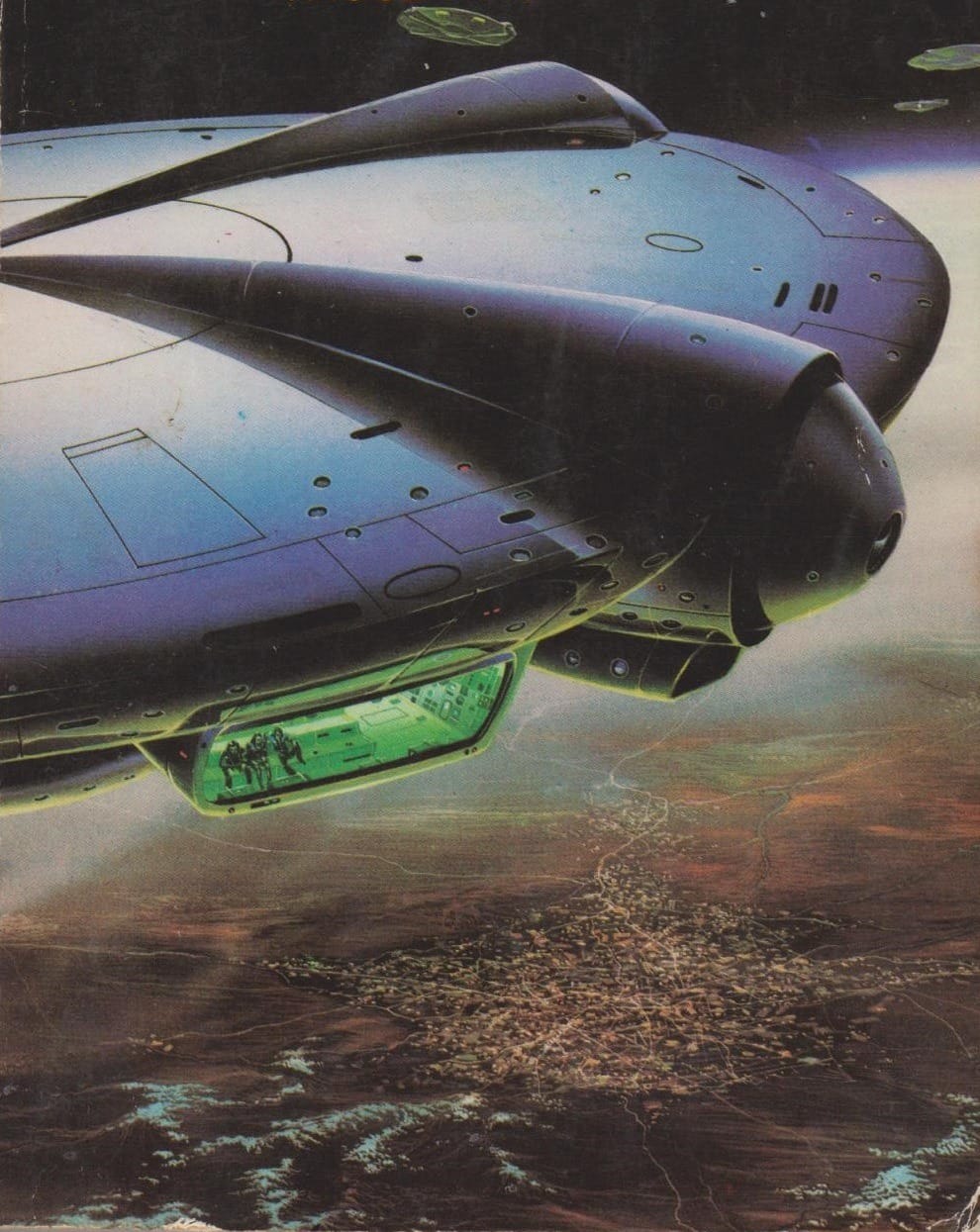
Peter Elson is another big UK science fiction illustrator, and he's easily the second most prolific spaceship window guy. Here are a few examples.
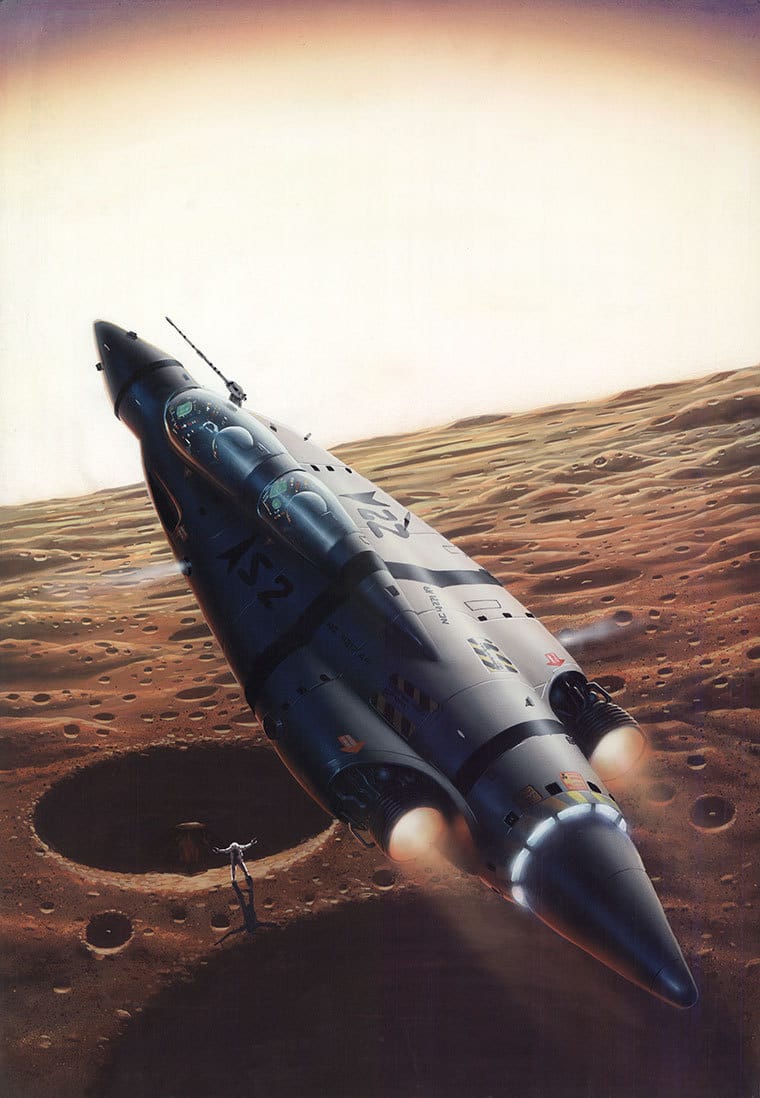
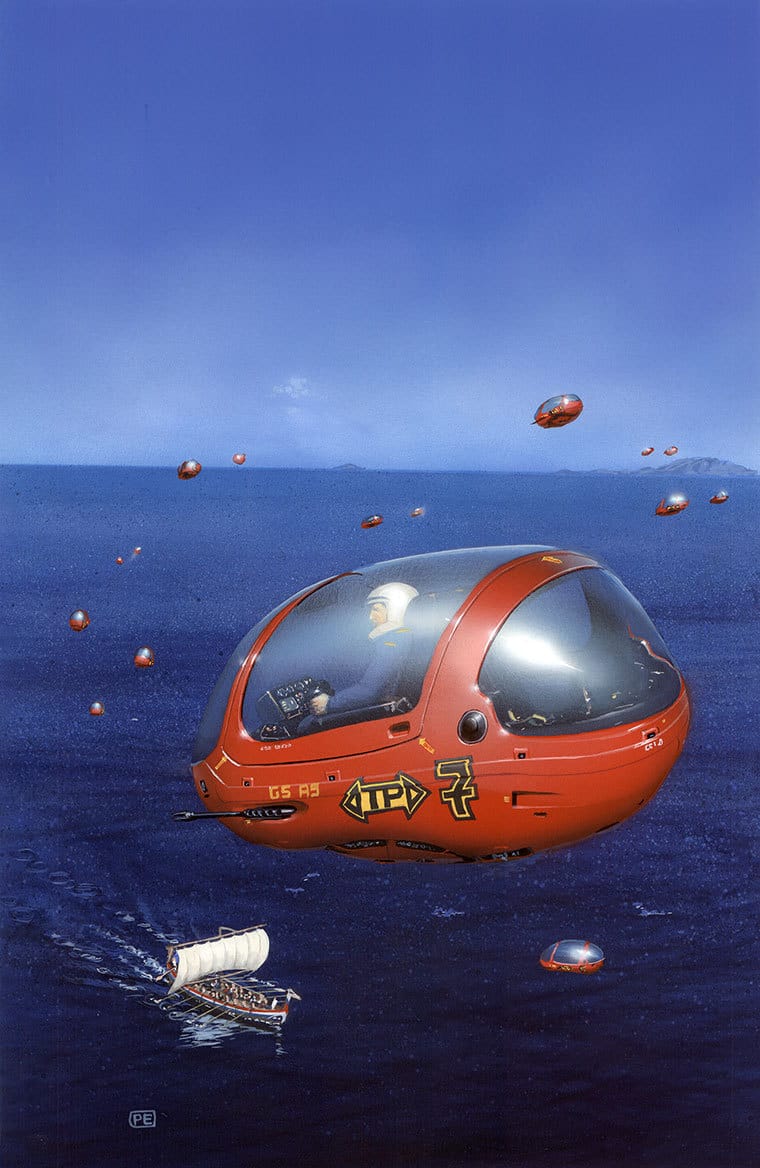
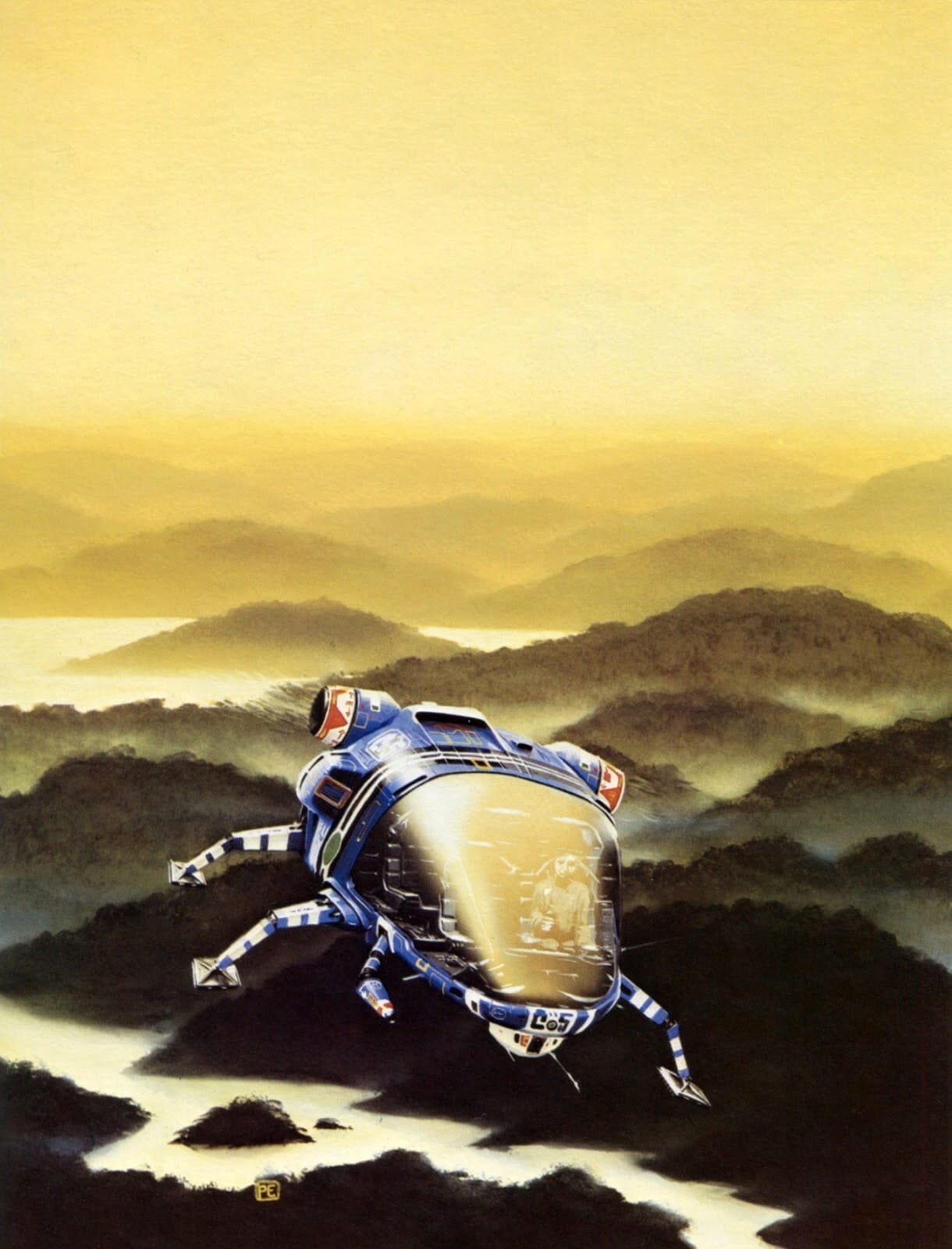
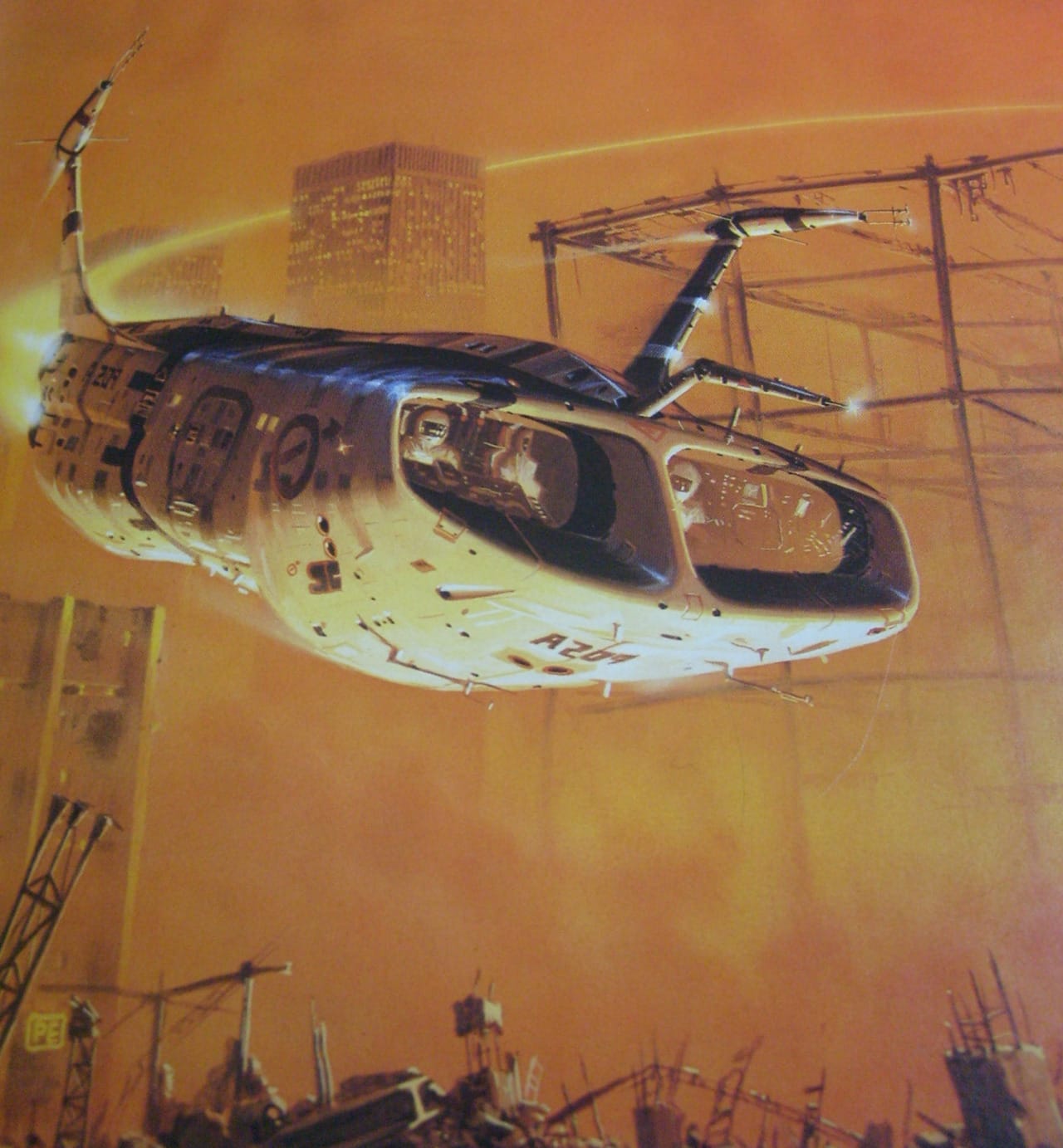
A few more UK artists have examples of the trend as well.
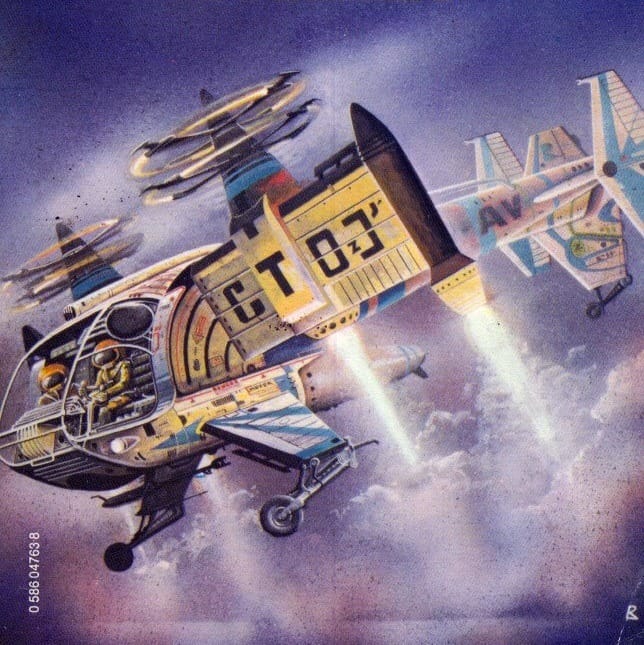
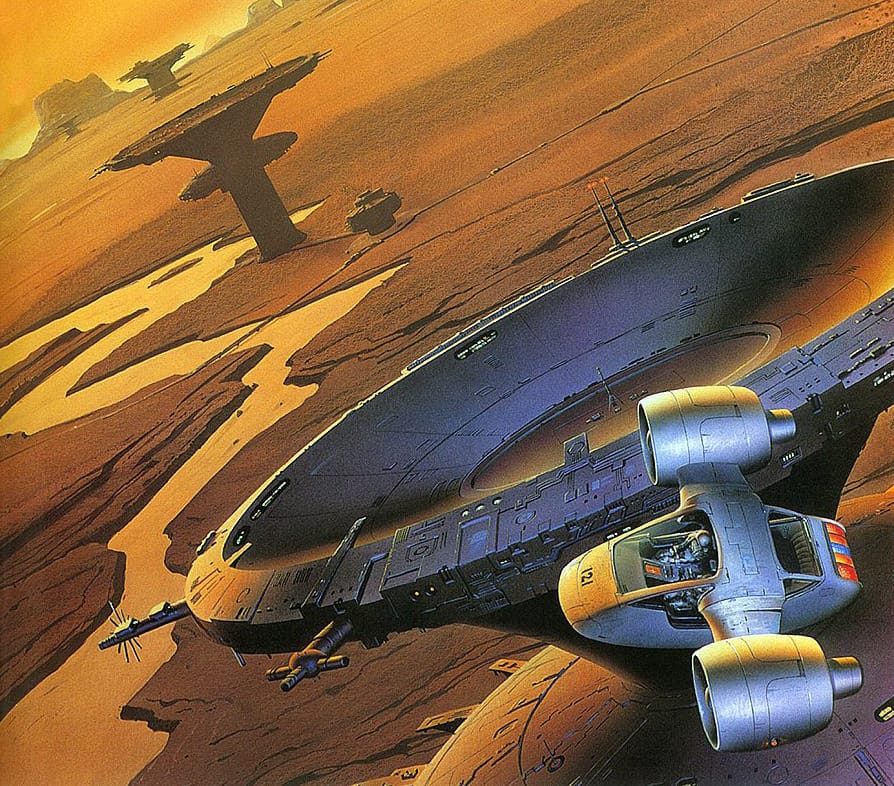
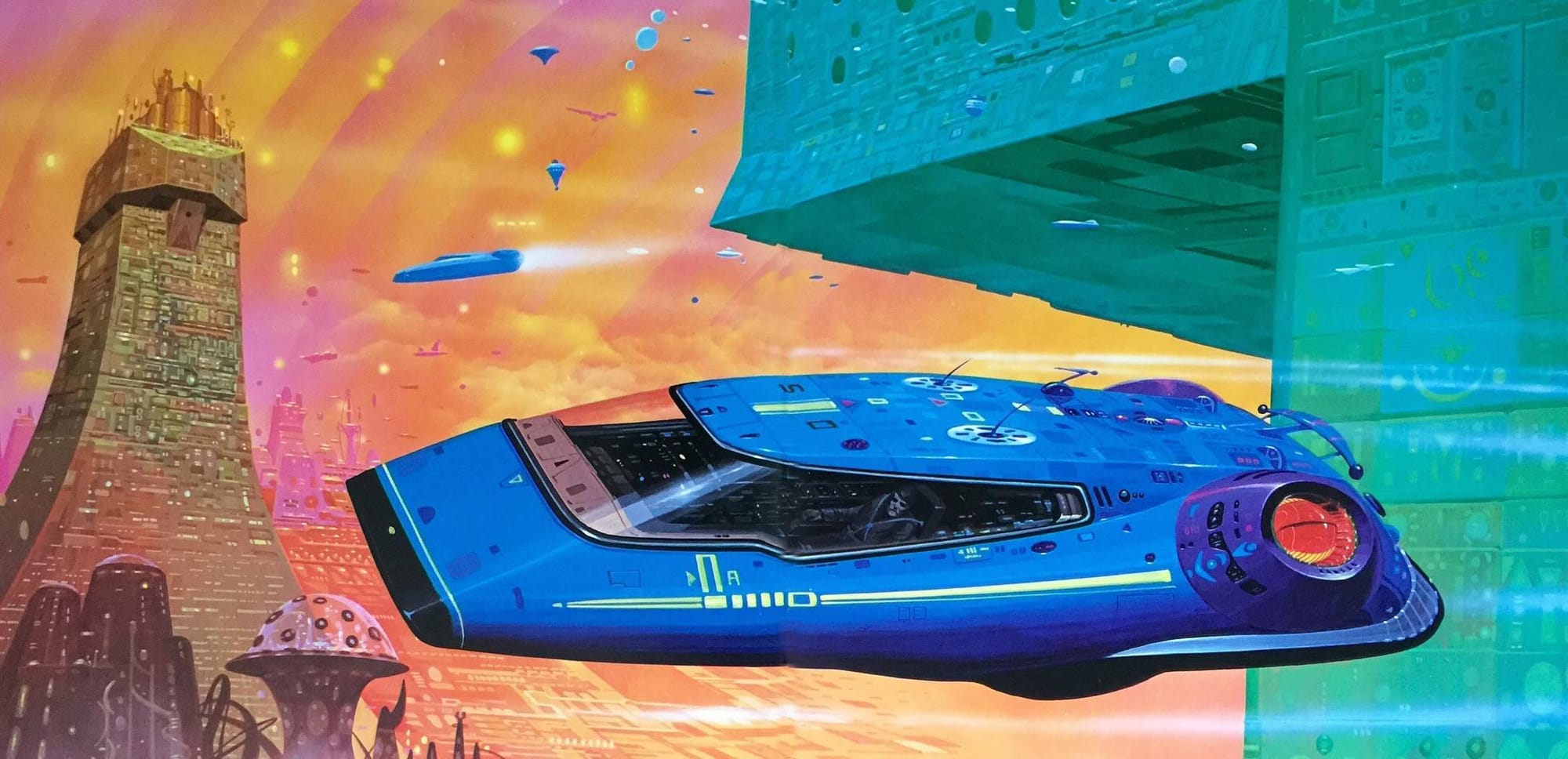
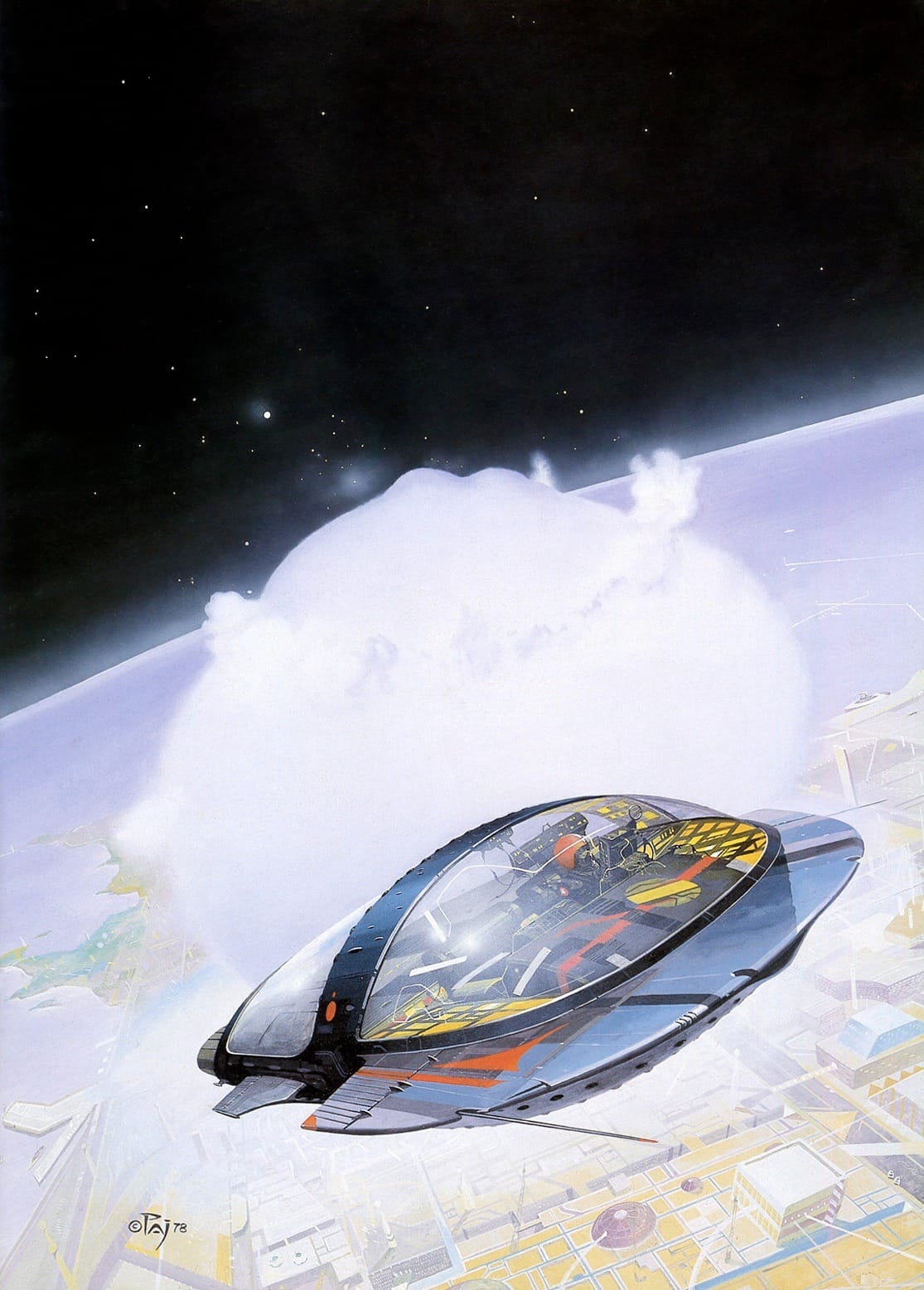
To be fair, more than a few of the examples we've seen so far are clearly aircraft and are intended to function within a planet's atmosphere (Bob Layzell even has rotors on his), so the windows are justified.
I'm not sure why this trend was so popular in UK cover art, aside from the fact that book publishers love copying what's been proven to work for others.
But there are examples from outside the UK as well. Shusei Nagaoka's 1975 illustration "Hovercraft for Leisure Use" is one of my favorites.
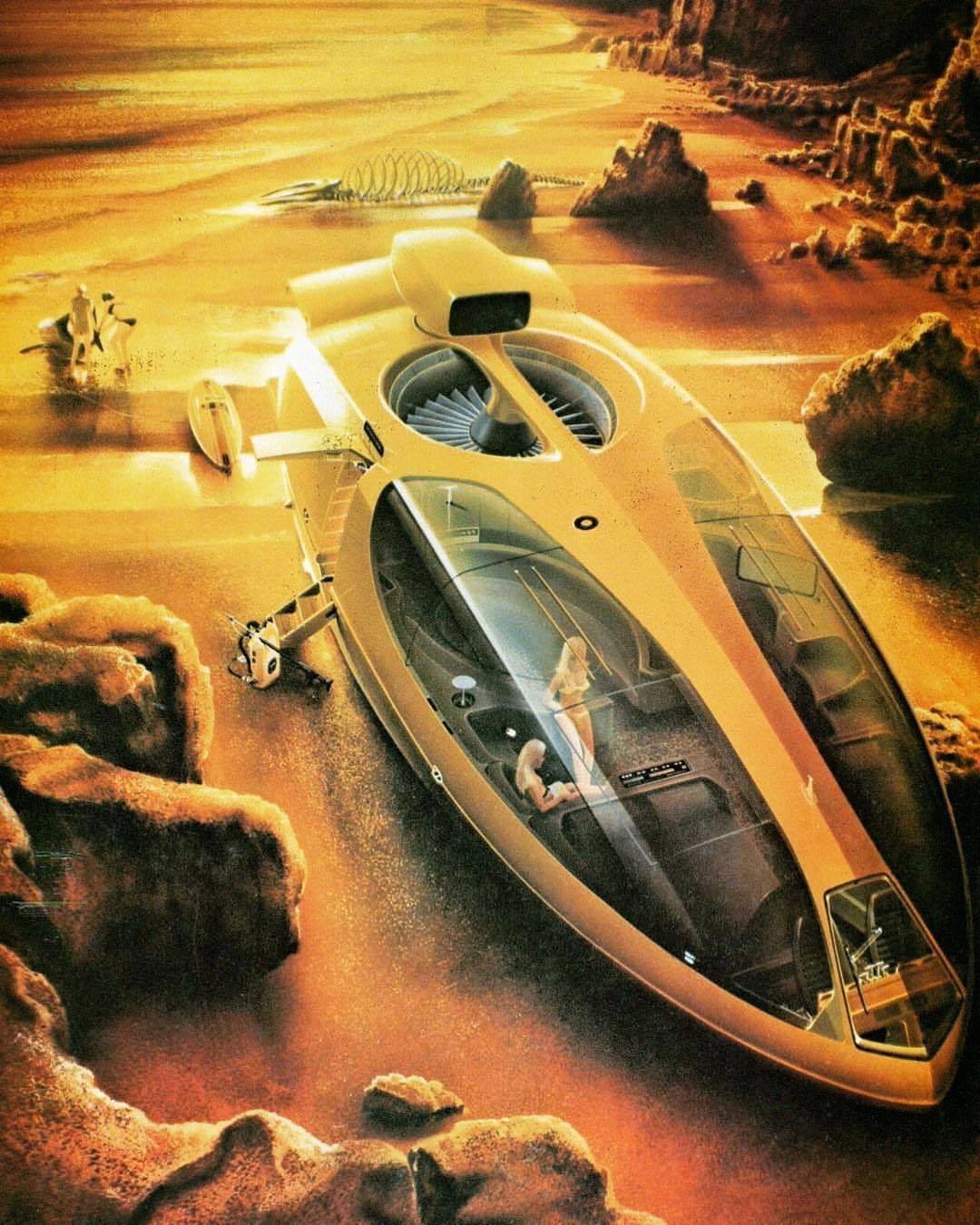
Ian Craig’s 1981 cover for Clark Darlton & K.-H. Scheer's Délos a disparu.
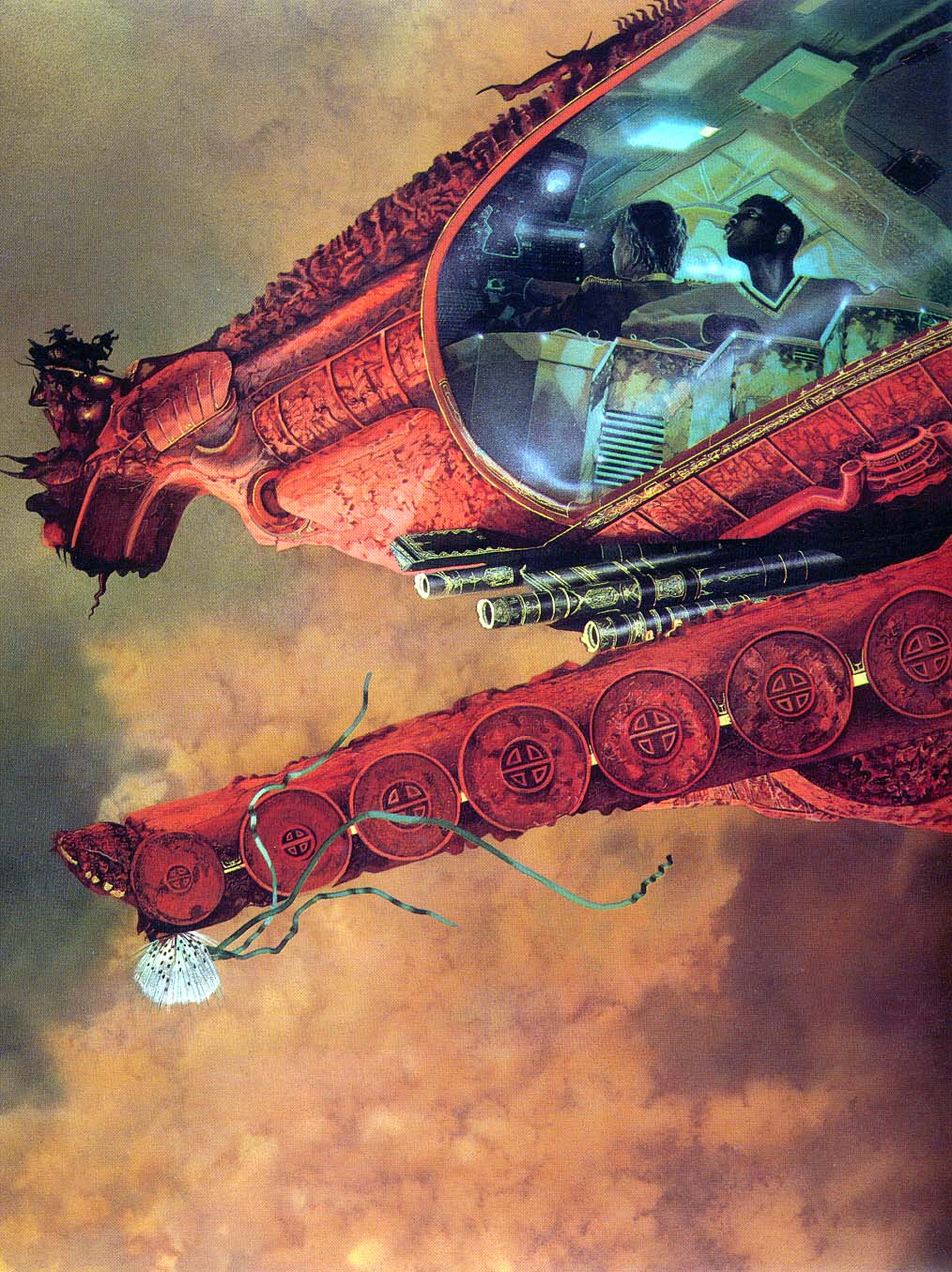
Boris Vallejo has one from 1981, "Celestial Cab."
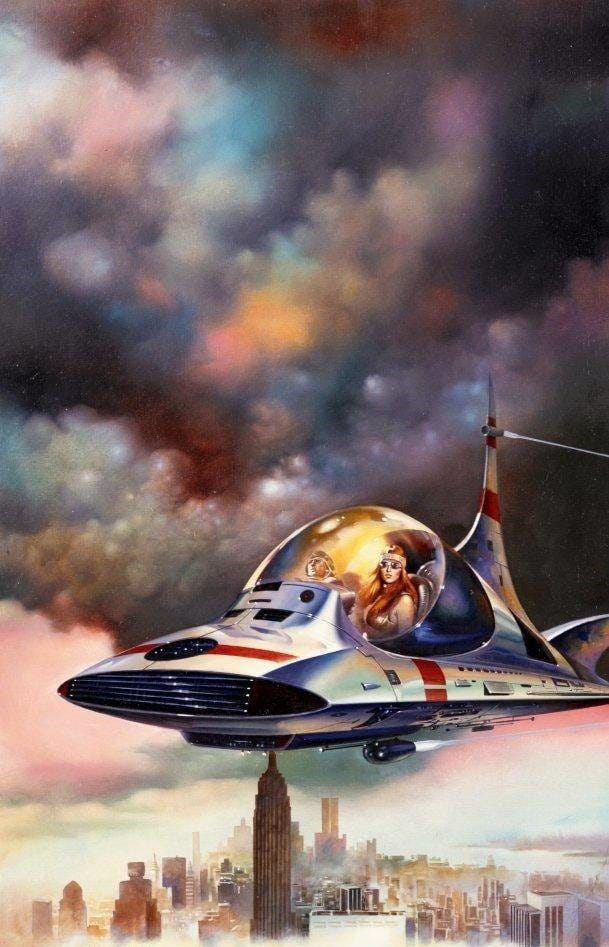
Some illustrations are clearing portraying the spaceship as if it's a fighter jet, and the windshield is a part of selling that concept.
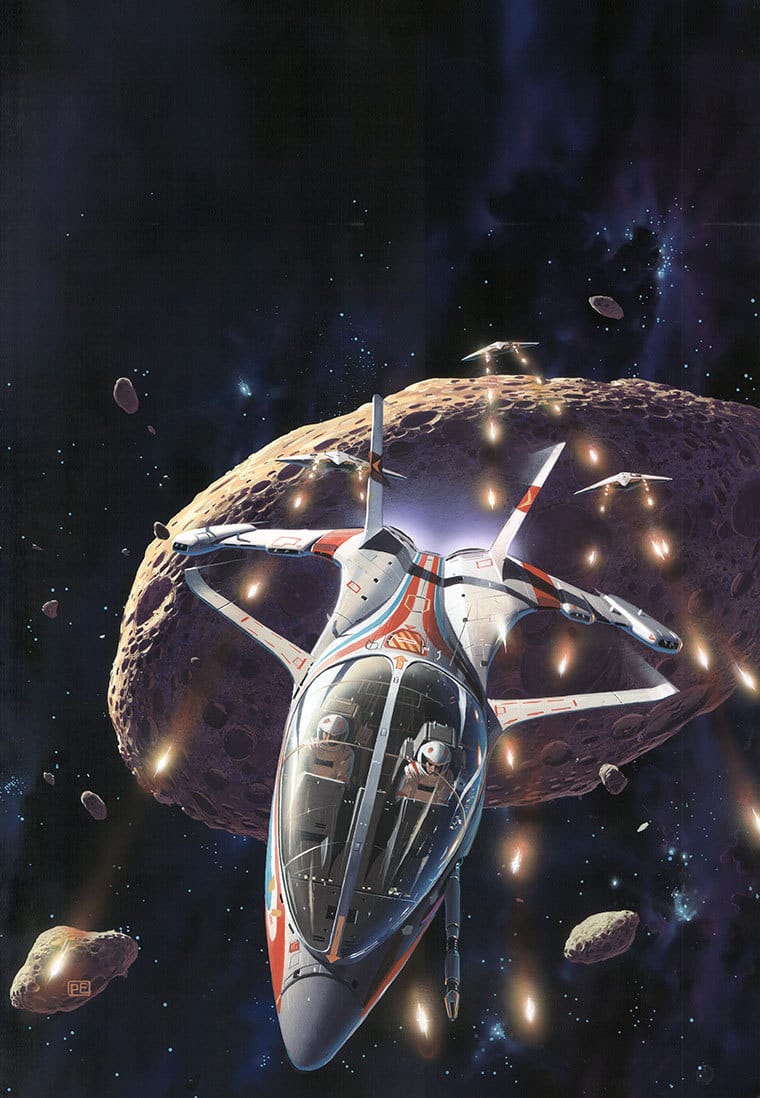
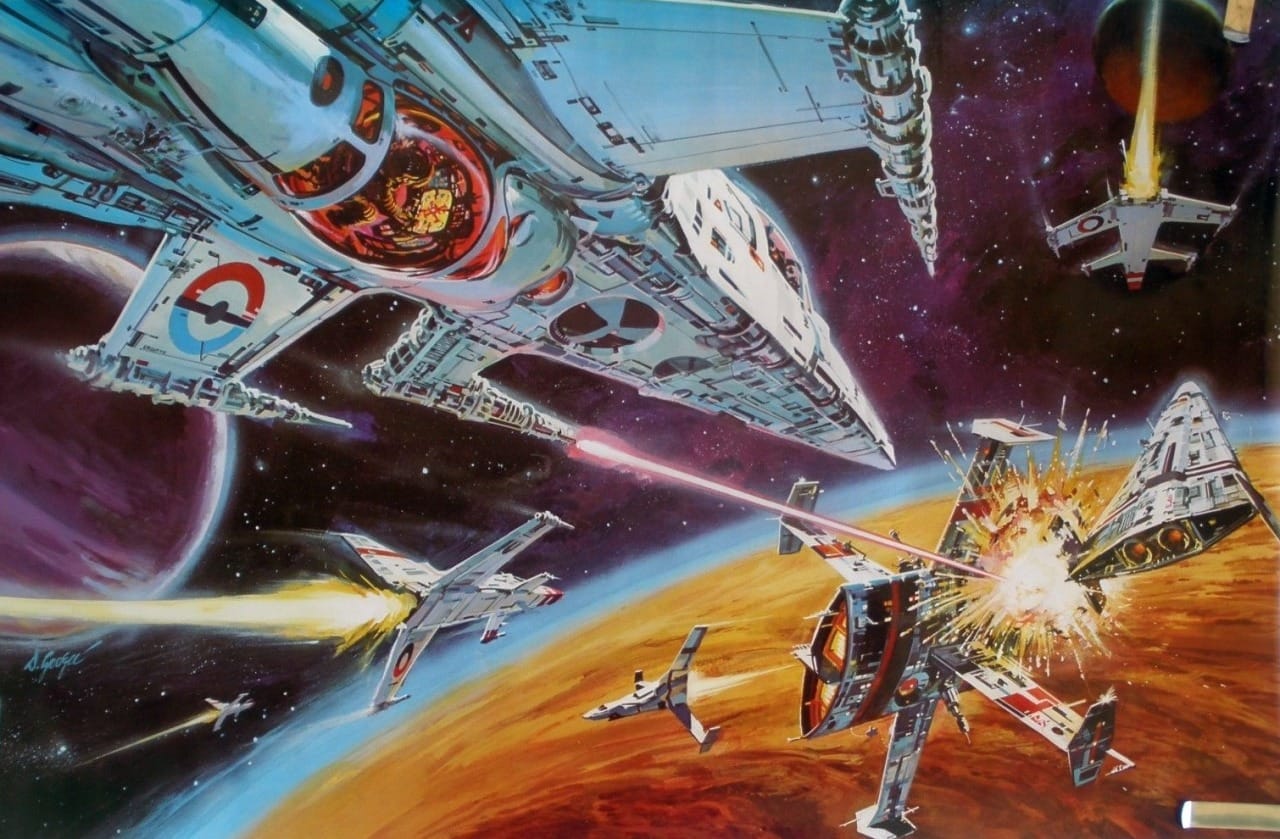
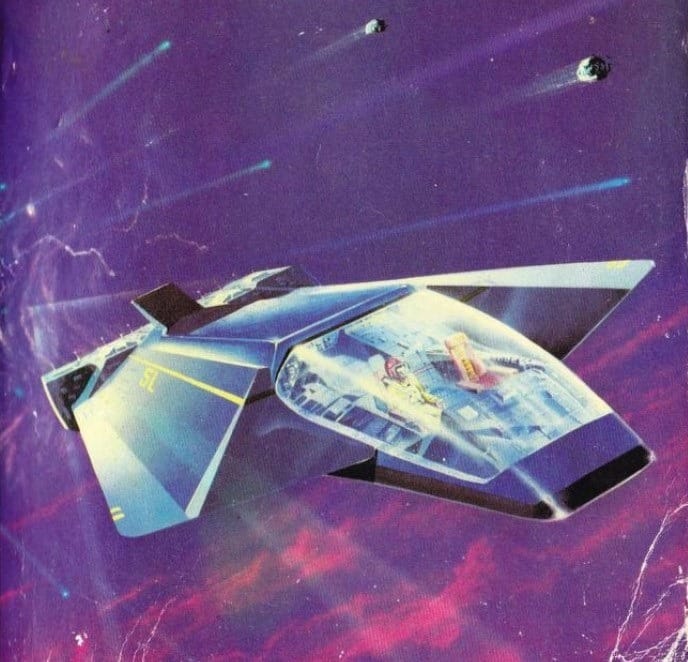
Translucent windows make more sense on smaller maneuverable craft like the one installing a solar panel in this Robert McCall illustration. It's similar to a bubble submarine.
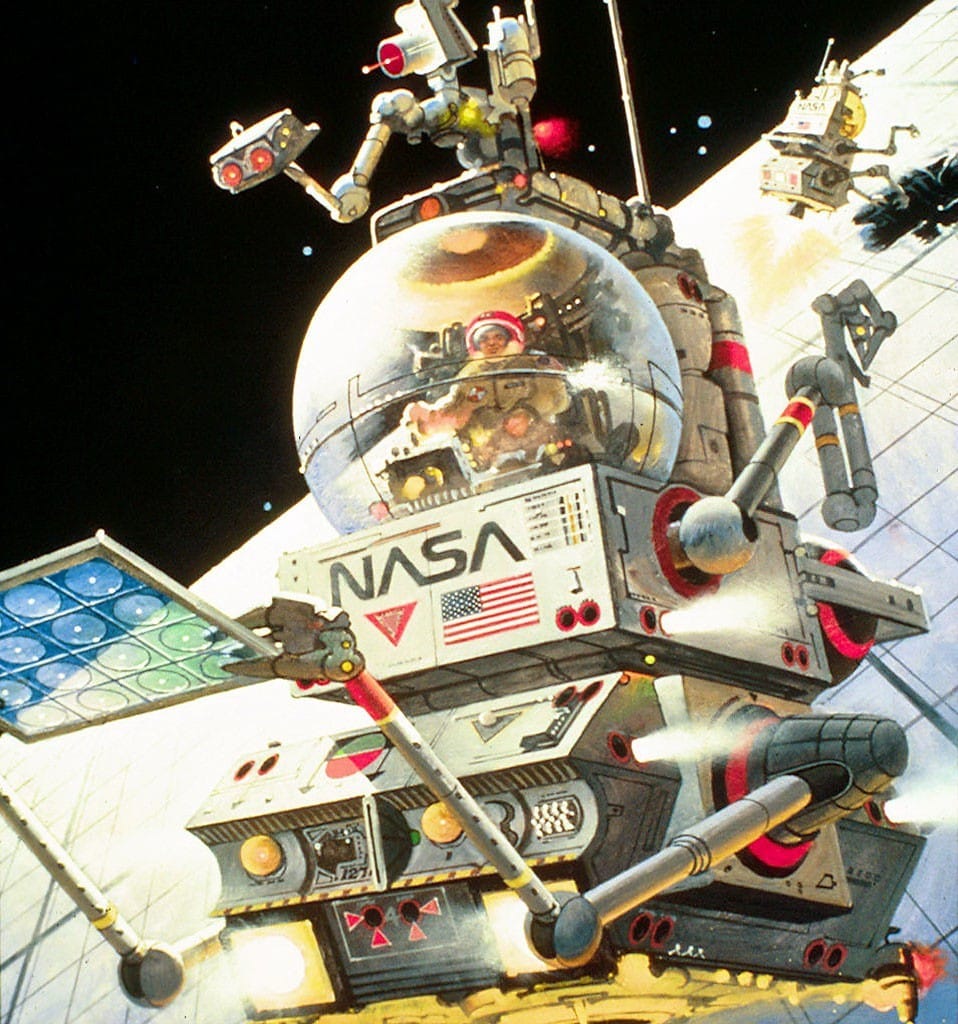
Peter Elson has another example of a smaller, lifeboat-style space craft. My knees hurt just looking at this thing.
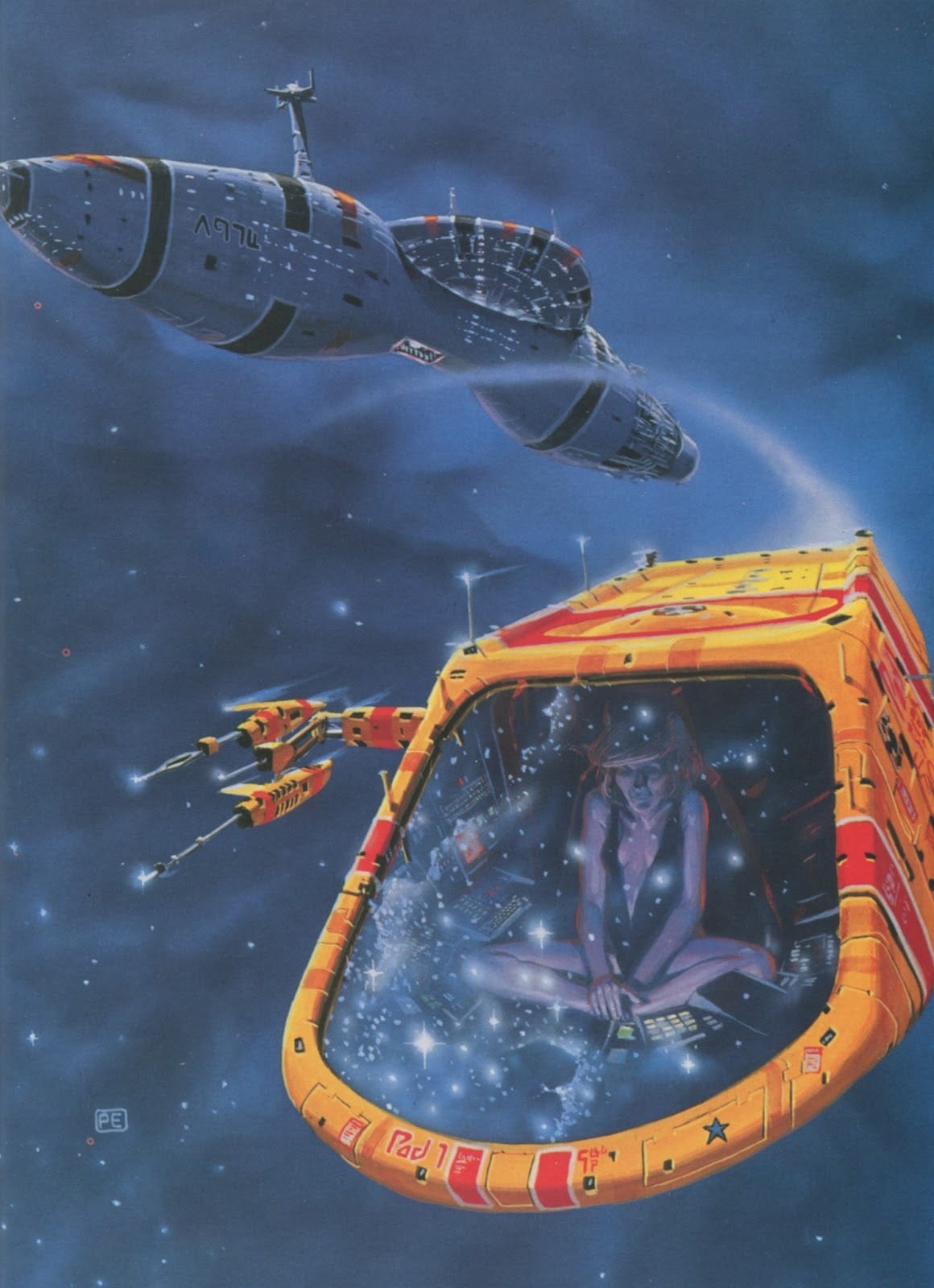
This Mike Minor concept art was either for Star Trek: The Motion Picture or for the unproduced Phase II TV project (or both? idk).
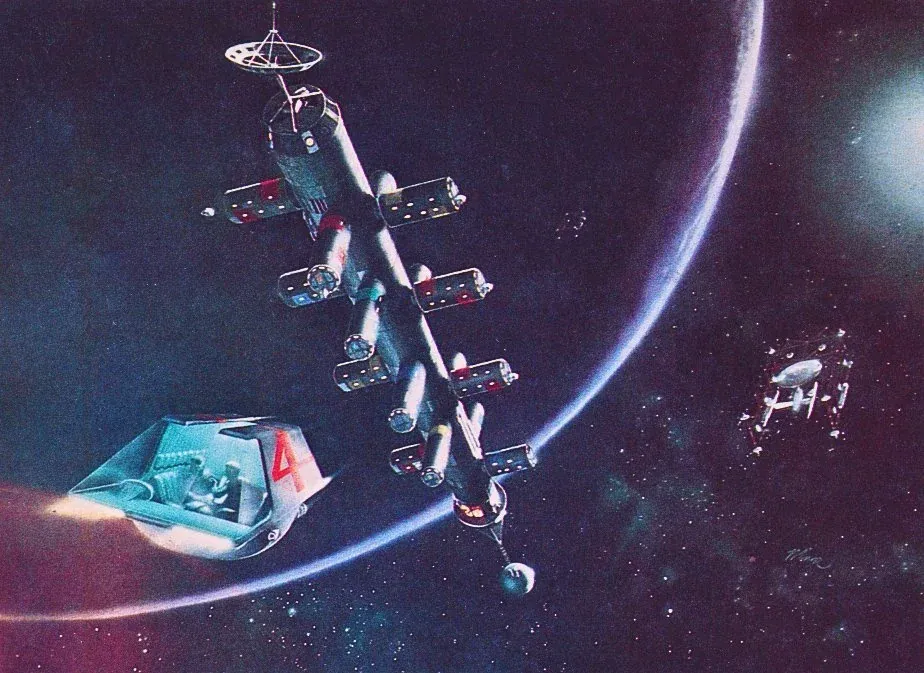
Ken Barr's 1980 cover to Andre Norton’s Star Gate features another incredibly tiny ship. And it's an example of another sub-genre of spaceship window: The Spaceman Spiff-style viewport poking out of the top of the spacecraft.
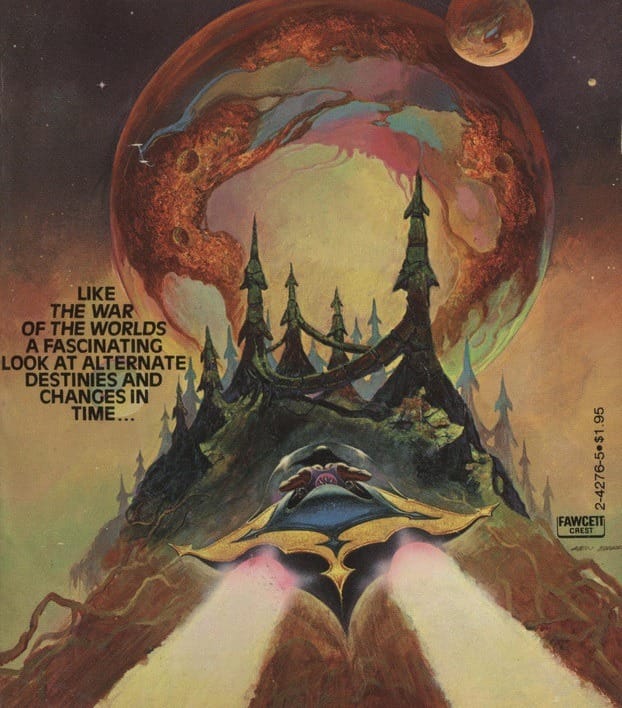
Here's a much larger example of this type of viewport, from Ron Walotsky.
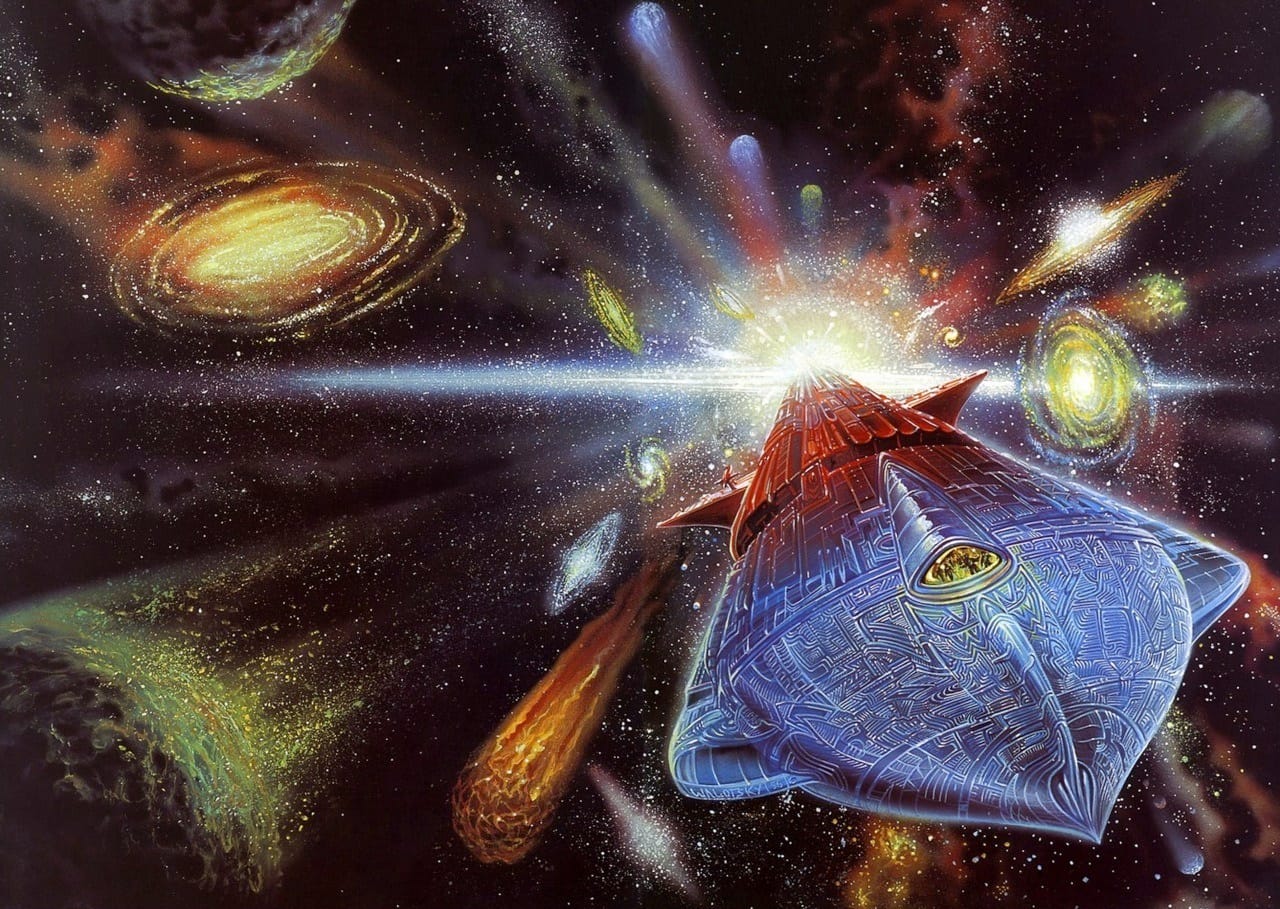
Here's another one from Ron Walotsky, but with a dolphin this time.
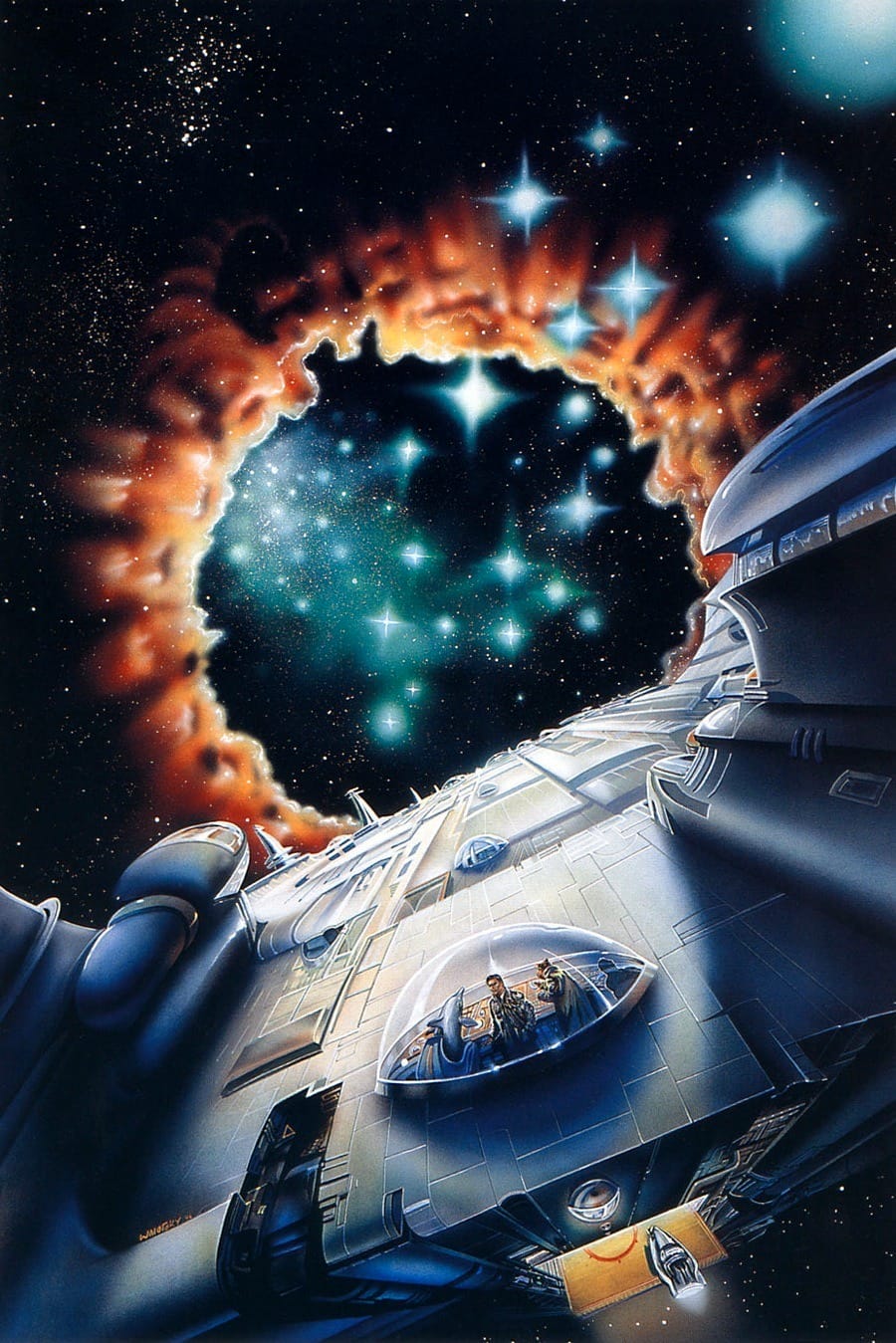
Here's an uncredited example from a Japanese space encyclopedia for kids, c. 1971.
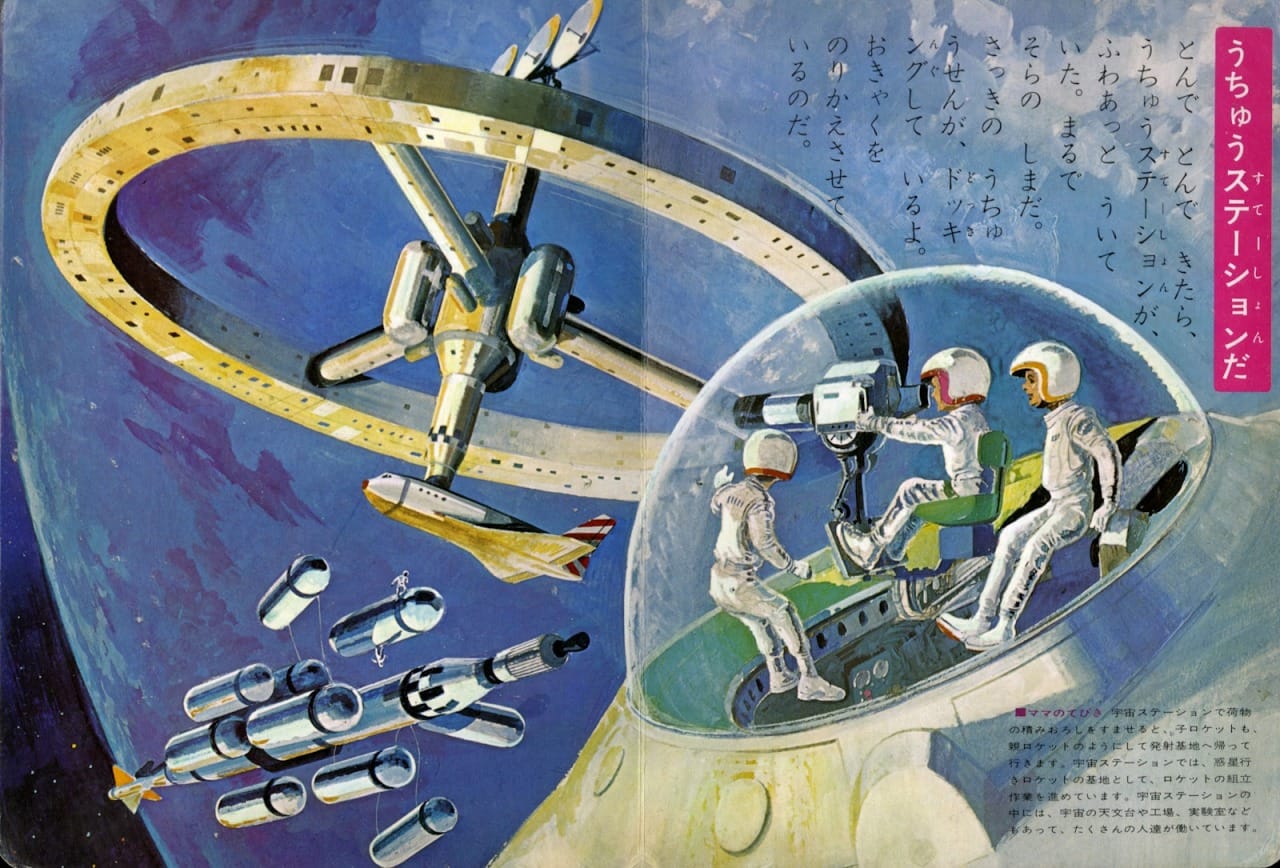
And another uncredited one, the 1977 cover art for Stargate, by Stephen Robinett.
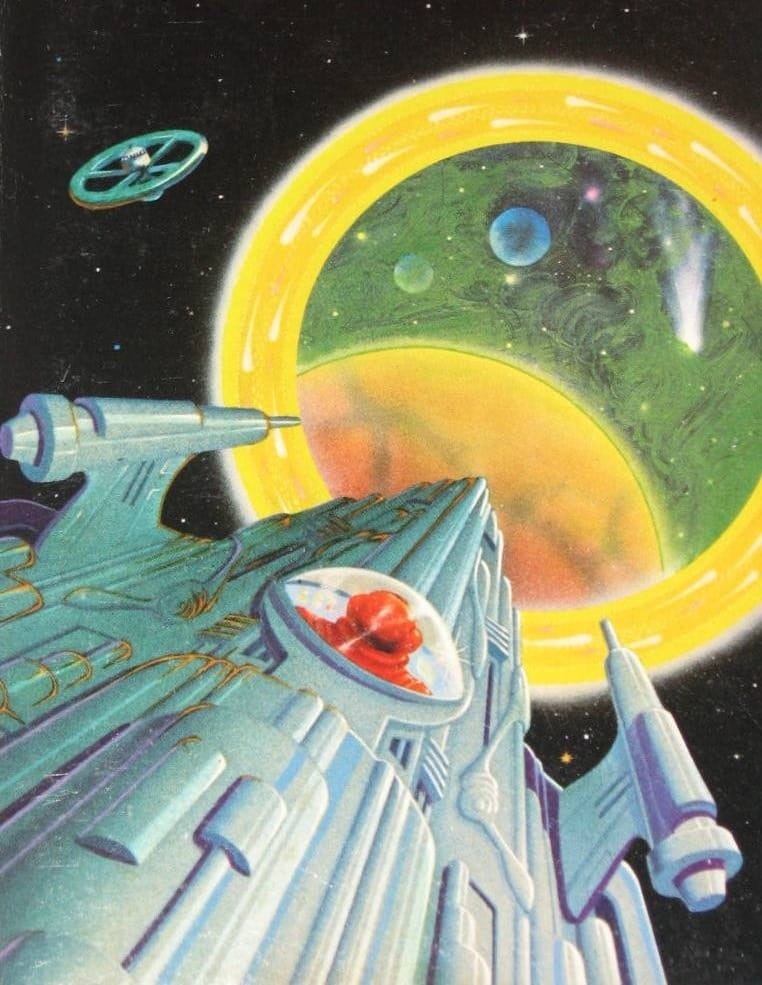
Finally, here's the greatest spaceship window of all: Jacques Devauld's 1978 vinyl cover for Motown Sounds – Space Dance.
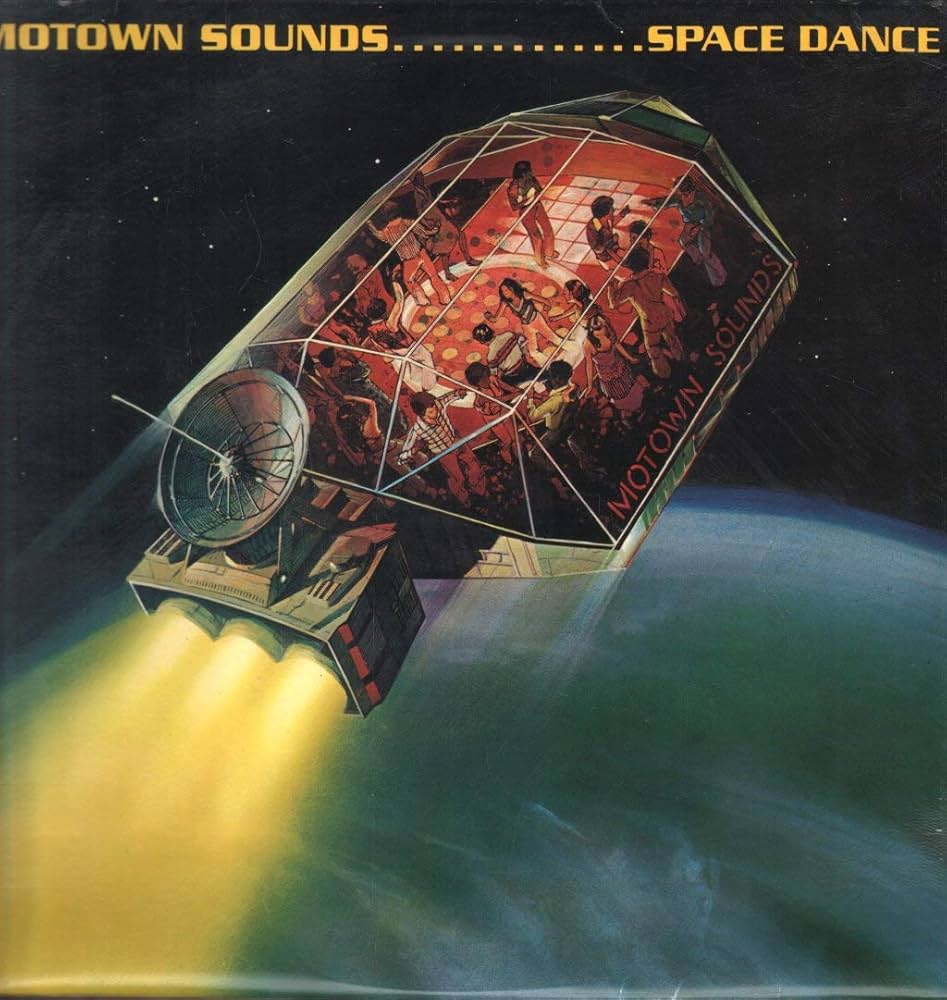
Cool Links
Did you fling The Flying Pickle from Burger King in 1975? - RetroArtBlog
Well, did you?! This is the sort of ultra-specific cultural fad that I never see in period pieces.
Fantasy ink studies based on the paintings of Caspar David Freidrich (1774-1840)
I don't know her, but the artist indui posted this very cool Bluesky thread of six ink studies she did, along with the specific paintings by Romanticist Caspar David Freidrich that each was based on.
Interview with the author of a new UFO comics anthology. The cover's inspired by Time Life's Mysteries of the Unknown book series, so it has to be good.
Music rec: It's October! Time to get in the Halloween mood with 19 hours of Horror Synthwave.
Next Time: Cubes in Sci-Fi Art